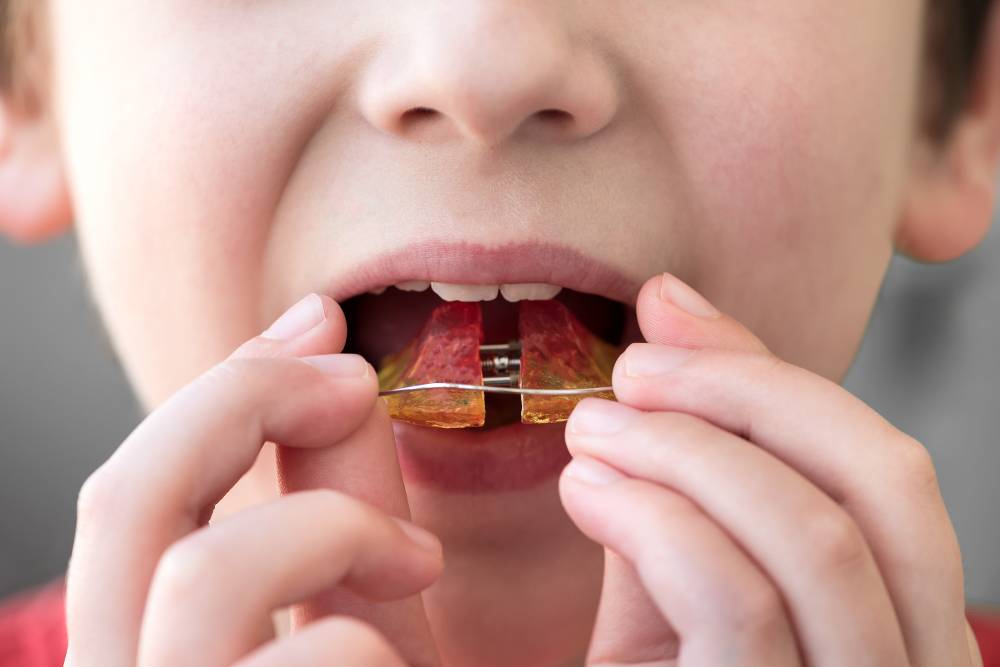Orthodontic technology has seen an immense growth within the past few decades. and new appliances are constantly being implemented in favor of efficacy and comfortability. Though terms may seem complicated and their functions vague, a general understanding of these orthodontic appliances help the patient understand what these tools do, how long they are typically used for, and when they are applied.
Palatal Expanders Make Room
Palatal expanders are used when front baby teeth fall out while molars are intact. Fixated around four baby teeth that remain, the expander functions to expand the jaw to create more room and promote correct placement of incoming adult teeth. This is achieved by adjusting a small screw that sits in the center of the upper jaw. Because the jaw is not yet fully formed, the process is painless, and the appliance is generally worn for three to six months.
Nance Orthodontic Appliance
Though also used when baby teeth fall out, the nance is a very specific appliance used to prevent the molars from rotating or drifting forward while waiting for adult teeth to fill the gaps. Though it can be made removable, the fixed type is more effective and is used for six to eight months.
Spacers before Braces
Designed to prepare a patient’s teeth for braces, spacers are typically used around the molars to make room for metal bands later on. Most commonly, spacers are made from rubber or metal and stay on for about a week before braces installation. If they fall out on their own, it usually means they have served their purpose and the teeth are ready for braces.
Headgear
Until recently, headgear has been used as the predominant method for correcting an overbite. It is a removable appliance that attaches to installed braces and must be used 12-14 hours a day for one to two years. While becoming more rare in application, headgear is still used at times for children younger than 10 to expedite treatment.
Herbst Appliance
Typically used between 8 and 12 months, the Herbst is the leading method for correcting an underbite amongst pre-teen and early teenage patients. Used either before or concurrently with braces, installation is performed using a series of bands around the molars connected by small telescoping arms that run between the top and bottom jaws. The result is a minimalistic approach to traditional headgear and sees much more patient compliance because it is both permanent and less visible.
Forsus Springs
If braces are already installed, Forsus springs can be used to correct an overbite after 8-12 months of installation. Typically used for four to six months, these small springs are installed directly onto the braces rather than using a separate system. Like the Herbst, hygiene is best maintained by using a waterpik in addition to brushing and flossing.
Retainer
The last phase in most orthodontic procedures is the utilization of a retainer. Best used for the rest of the patient’s life, retainers are unobtrusive and function to maintain the new smile achieved with braces or Invisalign. Orthodontists may use either a Hawley retainer, which has a plastic base and a wire that spans around the teeth, or an Essex retainer, which looks like an Invisalign aligner.
There are many types of orthodontic appliances, and they are relatively short-lived and painless due to constant innovations within the field. Though the application may vary, the contingent factors are typically the desired results, the age of the patient, and whether or not braces are present.
